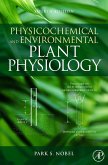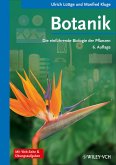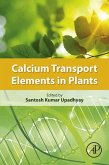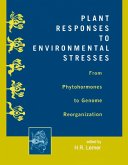This is the third edition of an established and successful university textbook. The original structure and philosophy of the book continue in this new edition, providing a genuine synthesis of modern ecological and physiological thinking, while entirely updating the detailed content. New features include a fresh, unified treatment of toxicity, emphasizing common features of plant response to ionic, gaseous, and other toxins, explicit treatment of issues relating to global change, and a section on the role of fire in plant physiology and communities. The illustrations in the text are improved over previous editions, including color plates for the first time, and the authors' continuing commitment to providing wide citation of the relevant literature has further improved the reference list. This revision of Environmental Physiology of Plants will ensure the reputation of this title as a useful and relevant text well into the 21st century.
- Includes enhanced illustrations, now with color plates
- Examines new molecular approaches which can be harnessed to solve problems in physiology
- Features new topics such as the unified treatment of toxicity, an explicit treatment of the issues relating to global change, and a section on the role of fire
Dieser Download kann aus rechtlichen Gründen nur mit Rechnungsadresse in A, B, BG, CY, CZ, D, DK, EW, E, FIN, F, GR, HR, H, IRL, I, LT, L, LR, M, NL, PL, P, R, S, SLO, SK ausgeliefert werden.
"...this is a very fine introduction to the field. The chapters are well-organized and full of pertinent examples and references to the primary literature, and the writing is clear and lucid throughout. ...appropriate for an audience of capable, advanced undergraduates or beginning graduate students, to plant biologists from other disciplines looking for a brief introduction to or refresher on general plant ecological physiology." --Daniel Taub, Southwest University for PLANT SCIENCE BULLETIN, 2002
"The second edition remained the foremost compact text relevant to this topic throughout the 1990s, and consequently the new edition is likely to receive a warm welcome. ...this book is authoritative, and within the topics covered it is as comprehensive as can be expected within a single volume. ...This is a book that can be strongly recommended both to those already well acquainted with the earlier editions, and also to those molecular biologists who are seeking a compact introduction to whole-plant physiology and to ecological perspectives. It can be very strongly endorsed for students taking advanced undergraduate or post-graduate courses." --T.A. Mansfield, ANNALS OF BOTANY, 2002
"...an essential and valuable guide book for environmental plant physiology. ...The book can be warmly recommended to students of botany, plant biology, agronomy and crop science and especially to the modern plant molecular biologists in order to learn and understand how whole plants work." --Harmut Lichtenthaler, JOURNAL OF PLANT PHYSIOLOGY, 2002
"The second edition remained the foremost compact text relevant to this topic throughout the 1990s, and consequently the new edition is likely to receive a warm welcome. ...this book is authoritative, and within the topics covered it is as comprehensive as can be expected within a single volume. ...This is a book that can be strongly recommended both to those already well acquainted with the earlier editions, and also to those molecular biologists who are seeking a compact introduction to whole-plant physiology and to ecological perspectives. It can be very strongly endorsed for students taking advanced undergraduate or post-graduate courses." --T.A. Mansfield, ANNALS OF BOTANY, 2002
"...an essential and valuable guide book for environmental plant physiology. ...The book can be warmly recommended to students of botany, plant biology, agronomy and crop science and especially to the modern plant molecular biologists in order to learn and understand how whole plants work." --Harmut Lichtenthaler, JOURNAL OF PLANT PHYSIOLOGY, 2002









